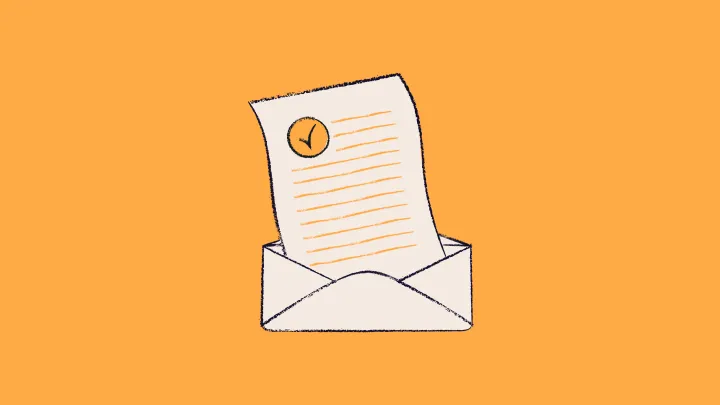How to write a maternity leave letter (tips for employers) + free template

I know from experience how hard it can be to understand the difference between legal requirements and HR best practice, especially when it comes to maternity leave.
UK employment law allows eligible employees to take 52 weeks of maternity leave from work — but companies can design their own maternity schemes to better suit their needs and those of their team members.
A small business without dedicated HR personnel often lacks the expertise they need to navigate the notoriously kafkaesque maze of UK employment bureaucracy, and don’t have the time to write and respond to maternity leave letters in the first place.
As a small business HR advisor, I’ve helped scores of small businesses stay compliant and on top of the law, while also creating a culture where employees who are expecting children are supported and valued. It’s a tricky balance, but achieving it will make your business a place that values mothers, children and people in general.
In this guide, I’d like to draw on my experience and offer guidance on what maternity leave letters are, how employers should write maternity leave letters, and how templates and HR software can make the process easy while maximizing its benefits.
What are maternity leave letters - and why are they important?
Maternity leave is one of the central processes of HR management. Maternity leave letters are how this process is executed.
Expectant mothers must have the option of going on maternity leave, so they can prepare for the child's birth and be present for the first year of their lives when the child's development is critical. A baby needs their mother, after all.
These letters are a formal documentation of the employee's leave request and your approval as their employer.
In the United Kingdom, there are two main types of maternity leave letters:
- Employee’s maternity leave letter: This is the first letter sent by the pregnant employee to their employer, formally requesting maternity leave. It includes details like the expected week of delivery and the intended start date of maternity leave
- Employer’s confirmation of maternity leave letter: When you receive the employee’s maternity leave request, you typically respond with a confirmation letter. Your response acknowledges the request, outlines the terms of the leave (including duration and maternity pay), and outlines the process for the team member returning to work.
Maternity letters are a legal requirement in the UK. They facilitate understanding and transparency between you and your team members and set clear expectations for the maternity leave.
These letters are in place so you can stay compliant with UK employment law and plan for the employee’s absence. As for the employee, having their request documented in these letters secures their right to maternity pay.
Also check out another part of the maternity leave process such as completing a risk assessment template and organising a phased return to work.
How to write a maternity leave letter (from employee to employer)
Once the pregnant employee decides to go on maternity leave and prepare for the pregnancy and birth, it’s important that they put in their request to you as soon as possible.
That way, you can plan for their absence and make any necessary adjustments to make sure that projects are finished and deadlines are met before they go on leave. It also protects your employee’s rights and entitlements.
Your employee’s maternity letter to you should include information such as:
- The employee’s statement of intention to go on leave
- The expected week of childbirth, as determined by a medical professional
- The dates the employee plans to start maternity leave and when they plan to return to work
The employee should send you this letter about 15 weeks before childbirth, or as soon as reasonably possible. The sooner you’re informed about their maternity leave, the better you can plan around their absence so that things continue to get done with the missing team member gone.
Maternity leave letter sample
Here’s an example of how the employee might word their request for maternity leave notice letter:
Subject: Maternity Leave Request - [Your Name]
Dear [Employer’s Name],
I am writing to formally notify you of my pregnancy and my intention to take maternity leave following the statutory requirements. I am currently expecting my baby on [Expected Due Date], and I plan to start my maternity leave on [Start Date of Maternity Leave].
As per the statutory guidelines, I understand that I am entitled to 52 weeks of maternity leave. However, I intend to take [Number of Weeks You Plan to Take] weeks of leave and, barring any unforeseen circumstances, plan to return to work on [Expected Return Date].
I have attached my MAT B1 maternity certificate, confirming my pregnancy and the expected due date of my baby. I understand that this will be used to arrange my Statutory Maternity Pay.
I am committed to making this transition as smooth as possible and will do my utmost to ensure all my responsibilities are up to date before my leave. I am also happy to assist in any way possible in finding a temporary replacement during my maternity leave if necessary.
Please let me know of any information or forms I need to complete before my leave begins. I appreciate your understanding and support during this important time.
Thank you for your attention to this matter.
Best regards,
[Your Name]
[Your Position]
[Your Contact Information]
A letter like this provides you as the employer with all the details you need to prepare for their absence. It also shows on the employee’s part that they’re willing to cooperate with the transition and make sure you’re in good hands while they’re gone.
You can download our maternity leave letter template here below as a Google Doc, so you can easily share it with your team members.

How you respond to a maternity leave letter (from employer to employee)
When you get your employee’s maternity letter, it’s your responsibility as their employer to respond in a timely and professional way.
Your response is officially referred to as a “confirmation of maternity leave letter”, which acknowledges the employee’s request and gives them information about their leave period.
Your response to the employee going on maternity leave should include:
- Confirmation of their maternity leave beginning and end dates
- Details about the maternity pay they’ll receive
- Expectations about what will happen at the end of maternity leave, such as when they’ll return to work
You are required by law to respond to a maternity leave request within 28 days of receiving it, confirming the dates and details about your employee’s return to work.
To help you form your response, we made this confirmation of maternity leave letter template to give you a starting point.
You can customise this template according to your circumstances and your company policies - or just fill out the placeholder text, and you’re all sorted!

Sealing the deal: streamlining your maternity leave process with HR software
Maternity leave letters help make for smooth and clear communication between you as the employer, and the employee about to go on maternity leave.
If you don’t have the time or hands-on expertise to formalise your maternity leave process yourself, I got you covered. I or one of the other HR advisors at CharlieHR can give you expert HR guidance, from drafting branded and personalised parental leave policies unique to your business, to reviewing the leave requests themselves. With the guidance of an HR expert, you can rest assured that you'll be on the right side of the law and have a maternity leave policy that values your employees as people.
Also, with CharlieHR’s time off software, requesting and approving parental leave is a piece of cake. Your team members can request maternity leave right in the platform and have them forwarded to you for approval, making sure everyone is on the same page and can plan accordingly.
Keen to see how it works? Try CharlieHR for free today.

Want more HR templates like this one?


